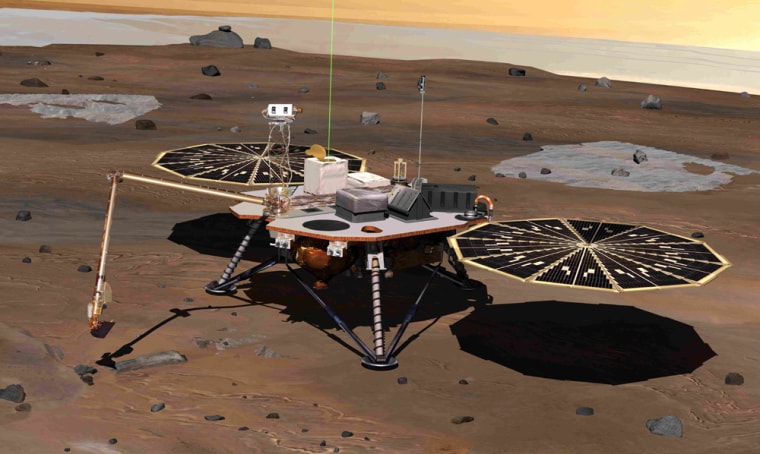Next week, NASA will begin attempts to revive the frozen Phoenix Mars Lander, which has been coated in ice in the Martian arctic for more than a year, to see if it can live up to its name and rise from the ashes.
The solar-powered spacecraft landed in the northern reaches of Mars on May 25, 2008, and spent five months digging up the Martian dirt looking for water ice, which it found just below the rusty red surface. The finding has implications for the possible past existence of life on Mars.
Beginning Jan. 18, NASA's Mars orbiter Odyssey will listen for possible, though improbable, radio transmissions from Phoenix. Mission managers aren't optimistic on the lander's chances.
"We do not expect Phoenix to have survived, and therefore do not expect to hear from it. However, if Phoenix is transmitting, Odyssey will hear it," said Chad Edwards, chief telecommunications engineer for the Mars Exploration Program at NASA's Jet Propulsion Laboratory, Pasadena, Calif. "We will perform a sufficient number of Odyssey contact attempts that if we don't detect a transmission from Phoenix, we can have a high degree of confidence that the lander is not active."
Phoenix lasted two months longer than its original planned three-month mission, finally succumbing to the increasingly cold temperatures and coatings of ice in November 2008, when mission managers lost contact.
The $475 million lander's hardware was not designed to survive the temperature extremes and ice-coating load of an arctic Martian winter. The probe has now experienced Martian autumn, winter and part of spring. (A Martian day is about 40 minutes longer than an Earth day, and a Martian year is about 687 Earth days.)
In the extremely unlikely case that Phoenix survived the Martian winter, it is expected to follow instructions programmed on its computer. If systems still operate, once its solar panels generate enough electricity to establish a positive energy balance, the lander would periodically try to communicate with any available Mars relay orbiters in an attempt to reestablish contact with Earth.
Odyssey will pass over the Phoenix landing site approximately 10 times each day during three consecutive days of listening this month and two longer listening campaigns in February and March.
The amount of sunshine at Phoenix's site is currently about the same as when the lander last communicated, on Nov. 2, 2008, with the Sun above the horizon about 17 hours each day. The listening attempts will continue until after the Sun is above the horizon for the full 24.7 hours of the Martian day at the lander's high-latitude site.
During the later attempts in February or March, Odyssey will transmit radio signals that could potentially be heard by Phoenix, as well as passively listening.
If Odyssey does hear from Phoenix, the orbiter will attempt to lock onto the signal and gain information about the lander's status. The initial task would be to determine what capabilities Phoenix retains, information that NASA would consider in decisions about any further steps.
